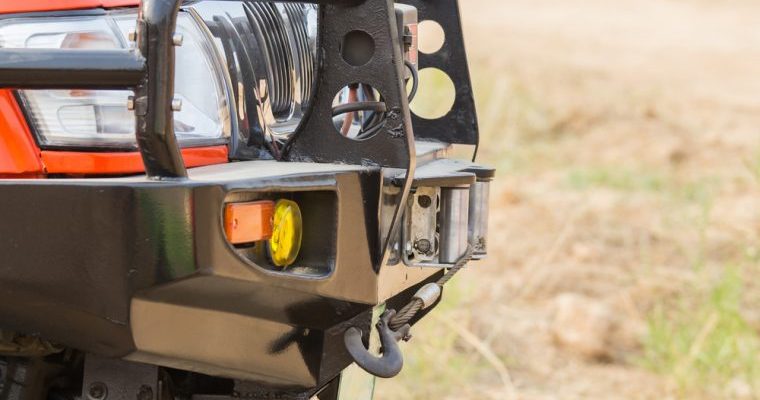
Bullbars – yes or no?
For driversBullbars, roo bars or nudge bars – whatever you prefer to call them, the subject of whether or not to fit them to your vehicle can be a divisive issue for some people. What can be agreed on, however, is when a vehicle should and should not have bullbars fitted, which in large part applies to where and how you use your vehicle.
Those who use their vehicle to enjoy the great outdoors, or do the bulk of their driving outside of a major city, consider bullbars an essential after-market addition to their vehicle. Conversely, almost every reputable motoring organisation and statutory body agree that cars in large cities and outer suburban areas neither need, nor should, have bullbars fitted to their vehicle.
In this article, we weigh up the pros and cons of fitting bullbars to your vehicle. And, for the sake of brevity, when we’re talking about bullbars, we’re including roo bars and nudge bars as well.
What you need to know
Whether or not your vehicle needs a bullbar fitted, there are a number of statutory requirements you need to adhere to, including Australian Design Rule 42/04 – General Safety Requirements and Australian Standard AS 4876.1.
Under these guidelines, the bullbar must follow the profile of the vehicle it is fitted to, the bullbar can’t increase the width of your vehicle (excluding the mirrors), any sharp edges must be chamfered or rounded off, no open-ended frame members are allowed and no small components (like brackets) shall be attached to the front of the bull bar.
It is essential you ensure the company fitting your bullbar is aware of the statutory obligations, and makes sure whatever they’re adding to your vehicle meets these standards.
The pros
If you do a lot of driving on rough, unsealed roads, a bullbar is a very handy after-market addition to your vehicle. They’re also good value on vehicles that do the clear majority of their mileage on country roads. Far from being exclusively for 4WD vehicles, it’s commonplace to see bullbars fitted to sedans and commercial utes in regional and rural Australia.
Of course, it’s hard to argue against the aesthetics of a tricked-out 4WD with a sweet looking bullbar at the front but the main reasons in the pro column for fitting bullbars are safety, protection and convenience.
Bullbars do a fantastic job of protecting the occupants of a vehicle when you’re in a collision, whether that collision involves another car, or an animal like a cow or a kangaroo. They also afford the front of your vehicle – the engine bay, cooling system, the electrics and your suspension – an added layer of protection in those types of incidents, or incidents in which roadside debris or fallen trees that you can’t see while driving at night or in hazardous conditions, could cause significant damage to your vehicle.
Bullbars are also a great mounting point to attach important off-road equipment such as winches, LED spotlights and driving lights, and antennas. Bullbars also make an excellent recovery point option if you find yourself bogged or in difficulty and need to be winched or towed to safety.
The cons
The cons of fitting a bullbar to your vehicle are numerous. Apart from the significant cost, there are also a number of safety and vehicle design and engineering integrity issues that come into play.
One of the biggest plusses in having a bullbar is also one of their most significant disadvantages. While a bullbar unequivocally increases the level of safety for the occupants of a vehicle involved in a collision, it also increases the likelihood of serious injury – even death – for the occupants of the other vehicle in the incident.
Bullbars also increase the likelihood of serious or permanent injury, or even death, for pedestrians or cyclists struck by a vehicle with a bullbar fitted. According to VicRoads, a pedestrian can usually survive a collision with a vehicle travelling at or below 60 km/h. “However, if the car is fitted with a bullbar the speed at which the pedestrian will survive is only 30km/h.”
Some other cons associated with having a bullbar fitted to your vehicle include decreased fuel efficiency from the increased weight, compromised front suspension if it hasn’t been strengthened to accommodate the addition of the bullbar, and the possibility of having your indicators, headlights and general field of vision partly obscured.
Research has also shown that airbags on vehicles fitted with a bullbar may not work properly and side impact crashes are more serious. “The forces exerted by the vehicle with a bullbar, particularly a 4WD, will impact higher up the vehicle, and closer to the head and chest of its occupants.”
Ultimately, to have or not to have a bullbar fitted to your vehicle comes down to individual choice. However, if your predilection for a bullbar is purely aesthetic and isn’t absolutely necessary, it would be wise to sit back, take a breath and think about whether the pros, in this instance, outweigh the cons.
Fleet managers have to consider very carefully when and if they will allow the addition of bullbars to any of their fleet vehicles.
Start a conversation with SG Fleet today
 Driving Insights
Driving Insights




